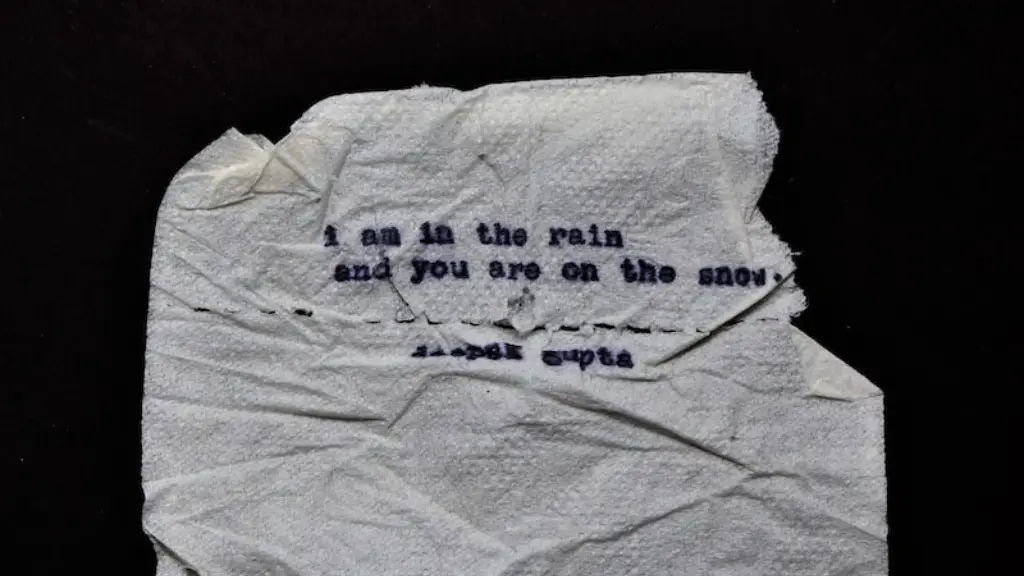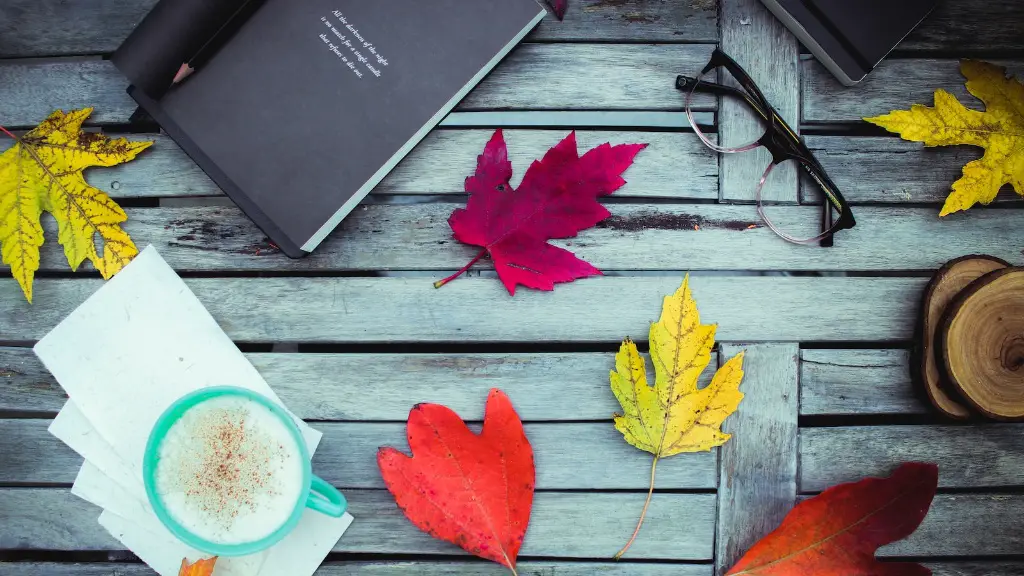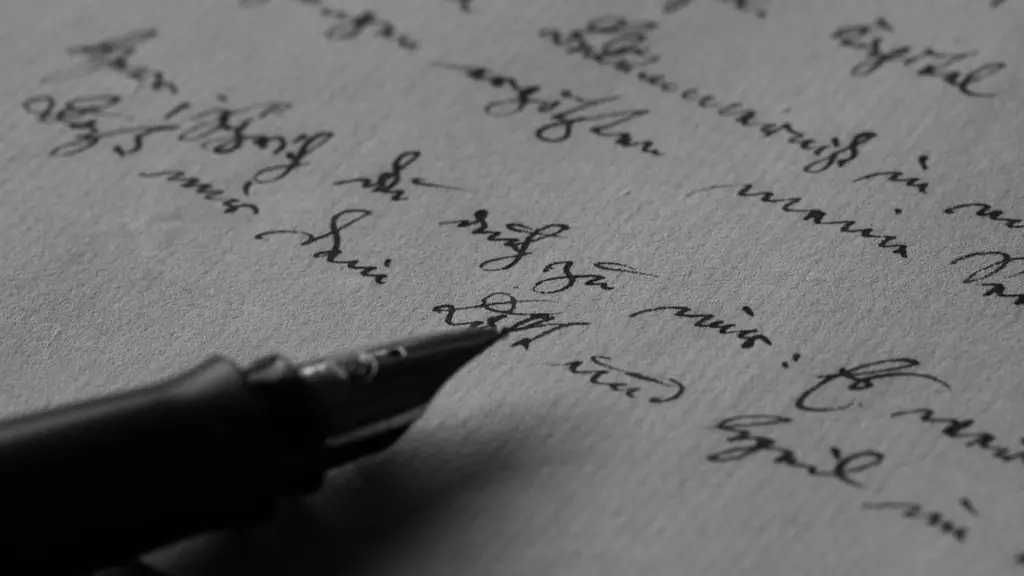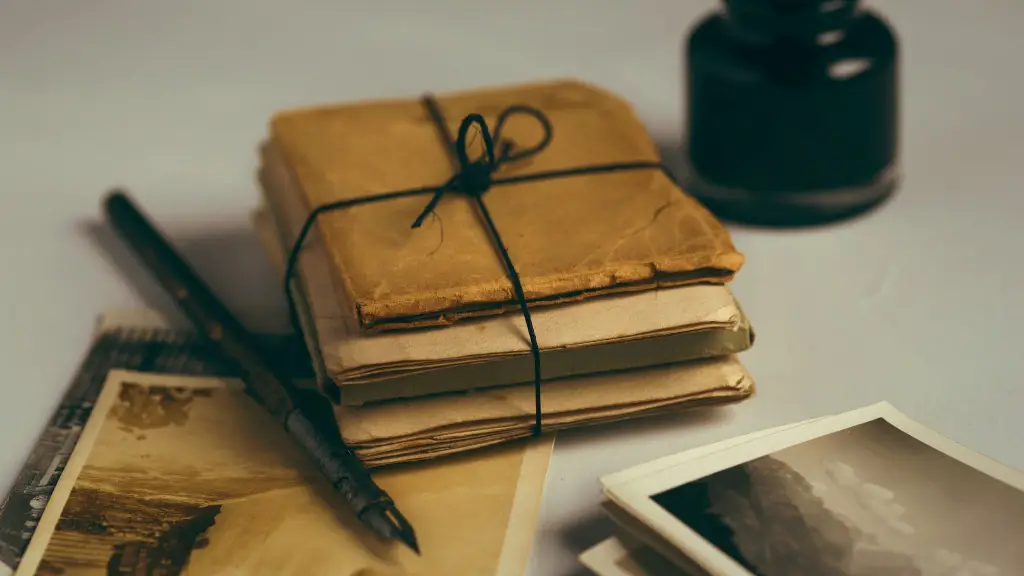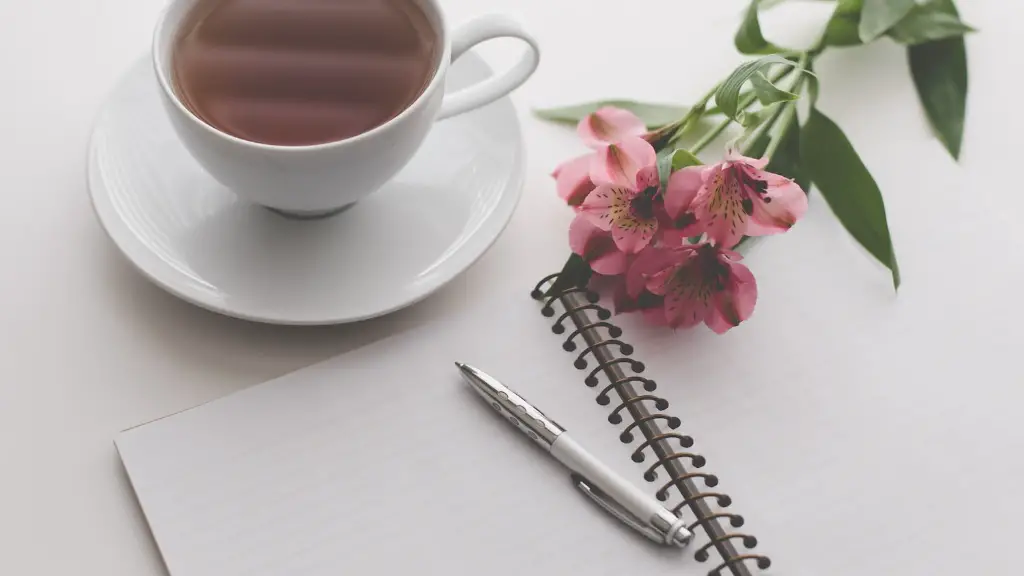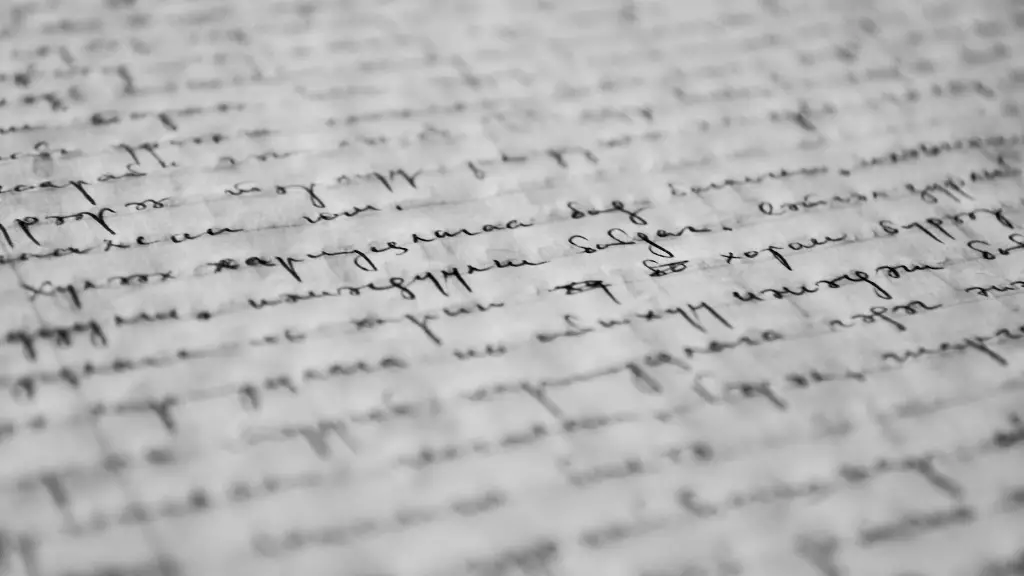Poetry is a form of literary art that has been enjoyed since ancient times. It usually consists of expressive language that conveys emotion, imagery, and sound. Different types of poetry have evolved throughout history, each with its own unique focus, structure, and form. Many types of poetry depend on devices such as rhyming, alliteration, and meter in addition to the content of the poem itself.
A popular form of poetry is free verse. Free verse is poetry that is not bound by any of the strict conventions of traditional forms of poetry such as rhyming or a specific meter. This can be both a liberating and daunting experience, as free verse can be as creative and unique as the writer wants it to be. Another popular form of poetry is haiku. Haiku is a type of Japanese poetry that is composed of three lines and seventeen syllables, and is often focused on nature, the seasons, and everyday occurrences.
There are various other forms of poetry that are well known in literary circles. These include sonnets, limericks, villanelles, sestinas, and epics. Sonnets usually consist of fourteen lines, usually with a set rhyming scheme and a certain meter. Limericks consist of five lines, and they often contain a rhyme scheme of aabba. Villanelles are composed of nineteen lines and rely on repeating lines and a set rhymes scheme. Sestinas are made up of six tercets and a final concluding stanza. Epics are long poems that recount heroic stories, usually of great national or cultural importance.
The form in which a poem is written will often depend on the topic that the writer is addressing. Poems can be written to speak of love, loss, pain, nature, politics, or any other subject that inspires the poet. Language can be flowery, direct, simple, or complex, depending on the poet’s desired effect. No matter what type of poem it is, the structure, form, and content are all essential elements that make a poem beautiful.
In many cases, the best poems are those that contain elements of traditional forms as well as improvisation. It is often the case that a poem that adheres too strictly to certain conventions can become stale, while a poem that includes free verse and other creative aspects will result in a much more unique and exciting work.
Rhyming Poetry
Rhyming poetry, often referred to as traditional poetry or formal poetry, is the oldest form of poetry and the most recognized. Rhyming poetry involves the use of words that rhyme in sequence and follow a strict set of rules. This type of poem is often composed of meter, which is the pattern of stressed syllables that make up a line of poetry. It uses internal and external rhymes to create a pleasing pattern for the poem. Lines often end with a word that rhymes with the word at the end of the line before. This type of structure provides an interesting and lyrical flow that is both pleasing to the ear.
Rhyming poetry can be found in many different works, from traditional folk tales to love letters. It is often used to recount stories and express emotion, as the rhyming pattern and meter can convey certain feelings. Examples of rhyming poetry include sonnets, which are composed of fourteen lines, and villanelles, which are nineteen lines of tightly rhymed verse.
By combining elements of rhythm and rhyme within a poem, the poet can create a unique and intricate structure that adds to the overall impact of the poem. Rhyming poetry is a great way to add structure and coherence to a poem, while still allowing the poet to express their feelings and ideas in a creative and unique way.
Experimental Poetry
Experimental poetry, sometimes referred to as avant-garde poetry, is not bound by strict conventions of meter, rhyme, or other traditional poetic forms. Instead, it allows the poet to explore more creative and innovative ways to express themselves. This type of poetry often relies more on structure and imagery than on traditional poetic conventions.
Experimental poetry does not have to adhere to any particular structure or form, and the poet may use symbols, metaphors, and other literary devices to express their ideas. It is a great way for poets to explore new ideas and concepts and to express themselves in new and creative ways. Examples of experimental poetry include ekphrastic poems, which are created in response to visual artwork, and found poems, which are created by taking words and phrases from other sources and arranging them in a new and interesting way.
Experimental poetry allows the poet to step outside the bounds of traditional forms and conventions and explore the creative possibilities of the written word. It is a great way to express unique and powerful ideas. It is also a great way to experiment with the use of language and to create something that is completely unique and original.
Concrete Poetry
Concrete poetry, also known as shape poetry, visual poetry, or calligrams, is a type of literature that combines language and imagery to form a poem in the shape of its subject. This type of poem focuses on form and visuals as much as on the words used in the poem. Concrete poetry is often composed of words arranged in a visual pattern to create the shape of an object or to convey the idea of the topic.
Concrete poetry can be found in many pieces of literature, such as poetry books, magazines, and even in song lyrics. It allows the poet to use words, phrases, and even symbols to create a visual representation of their ideas. This type of poetry is most often used to create interactive poems that engage the reader and to evoke feelings and emotions.
Concrete poetry is unique in that it provides the reader with an emotional and visual experience. It is a great way for poets to explore the artistic possibilities of the written word. It allows for creativity and experimentation with language and form, making it a great way for poets to express themselves.
Performance Poetry
Performance poetry is a type of poetry that is created to be performed in front of an audience. It is a type of spoken word poetry that is meant to be heard and experienced rather than read. Performance poetry is created to be performed on stage, but it can also be found in slams, open mics, and poetry readings. It is often accompanied by music or sound effects to emphasize the words.
Performance poetry is often characterized by a high level of emotion and energetic delivery. It is often created with a certain audience in mind, and the poet will use different techniques such as rhyme, alliteration, pacing, and volume to emphasize the power of their words. Performance poetry can be a powerful tool to convey a message or to share a story. It has the ability to engage and inspire an audience, and it can be used to explore themes such as love, loss, and identity.
Performance poetry is a great way for poets to connect with their audience and to create a powerful and visceral experience. It is a great way for poets to express themselves and to share their stories. It is also a great way for poets to explore new ideas and concepts and to connect with their audience on a deeper level.
Romantic Poetry
Romantic poetry is a type of poetry that focuses on the emotions of love and relationships. It is often characterized by a lyrical and poetic language and invokes feelings of joy, sorrow, longing, and desire. Romantic poets often focus on themes such as love, beauty, longing, and nature. This type of poetry relies heavily on metaphor and imagery to convey its meaning.
Romantic poetry is often composed of sonnets and lyrics. It is written in a lyrical and pleasing manner, often using poetic language to express emotions. Romantic poetry is often used to express love and longing, but it can also be used to explore other emotions such as frustration, anger, and despair. Romantic poets often use their words to create images and emotions that will evoke strong reactions from their audience.
Romantic poetry has been around since ancient times and has been used to express feelings of love and longing. It is a great way for poets to explore their emotions and to connect with their audience. Romantic poetry can be used to convey stories of joy, pain, love, and sorrow, allowing the poet to share their emotions and explore their own inner world.
Narrative Poetry
Narrative poetry is a type of poetry that tells a story. It often takes the form of an epic poem and is usually composed of multiple stanzas and scenes. Narrative poetry can be based on real events or on stories from myths and legends. It often follows a certain structure and uses rhyme, meter, and other poetic devices to create a pleasing pattern for the poem.
Narrative poetry has been around for centuries, and it is often used to tell stories, express emotions, and explore ideas. It is a great way for poets to explore their own understanding of the world and to share their stories with others. Narrative poetry can be used to explore themes such as love, loss, and identity, and to evoke feelings of joy and sorrow. It can also be used to explore complex concepts and ideas.
Narrative poetry is a great way for poets to tell stories and to explore the possibilities of language. It is a powerful and creative form of expression that allows poets to explore the depths of their own emotions. Narrative poetry can be a great way for poets to connect with their audience and to create a lasting impact.
